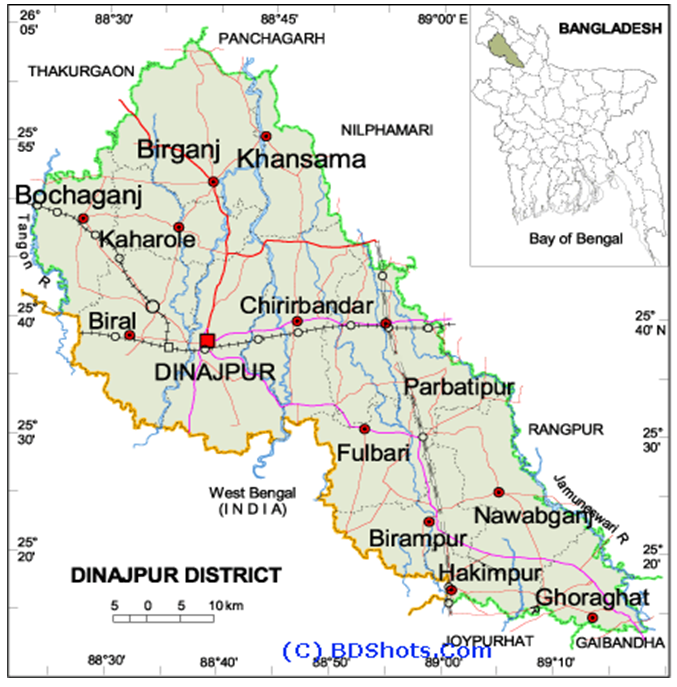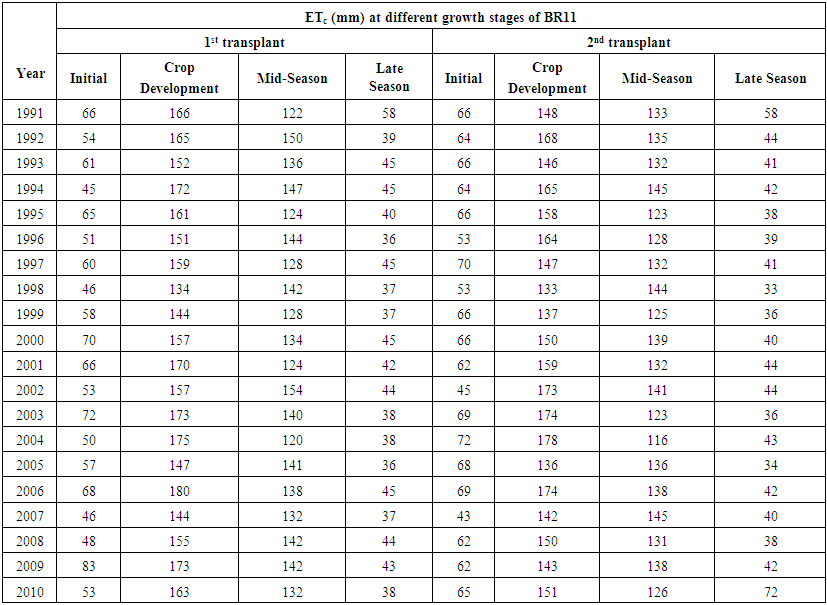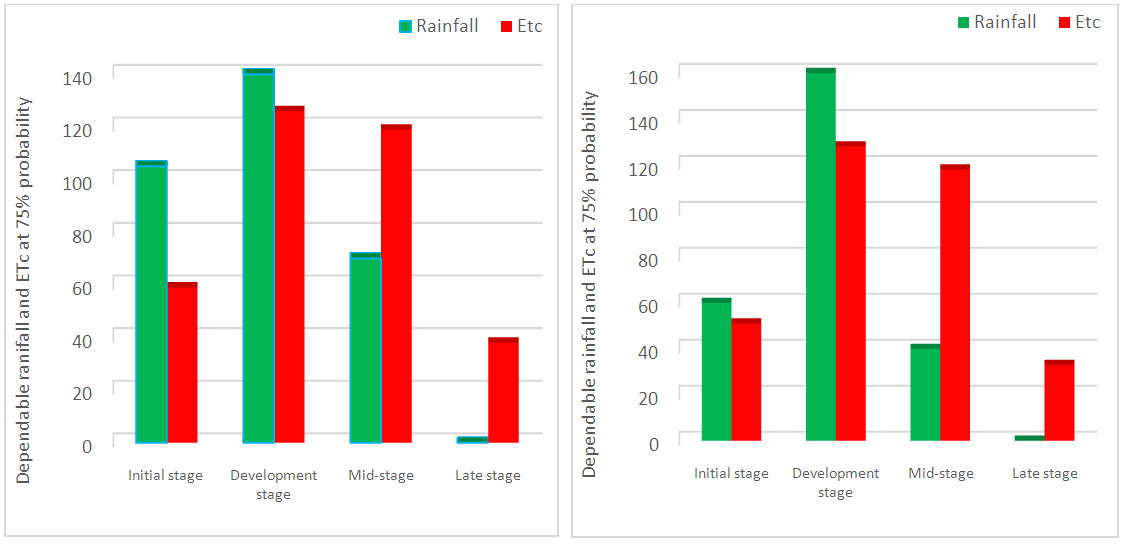-
Paper Information
- Paper Submission
-
Journal Information
- About This Journal
- Editorial Board
- Current Issue
- Archive
- Author Guidelines
- Contact Us
International Journal of Agriculture and Forestry
p-ISSN: 2165-882X e-ISSN: 2165-8846
2017; 7(5): 115-121
doi:10.5923/j.ijaf.20170705.03

Determination of Evapotranspiration and Supplemental Irrigation for Aman Rice Cultivation in Dinajpur
Maisha Fahmida, Mohammad Shiddiqur Rahman, Milufarzana, Rintu Sen
Department of Agricultural and Industrial Engineering, Hajee Mohammad Danesh Science and Technology University, Bangladesh
Correspondence to: Maisha Fahmida, Department of Agricultural and Industrial Engineering, Hajee Mohammad Danesh Science and Technology University, Bangladesh.
| Email: |  |
Copyright © 2017 Scientific & Academic Publishing. All Rights Reserved.
This work is licensed under the Creative Commons Attribution International License (CC BY).
http://creativecommons.org/licenses/by/4.0/

In this study, attempt was taken to analyze the evapotranspiration and rainfall for beneficial planning of aman rice cultivation in of Dinajpur district of Bangladesh. Two popular Aman rice varieties i.e., BR11, and BR22 were selected because of their popularity in this area. Daily Climatic data like rainfall, daily maximum and minimum temperature, maximum and minimum relative humidity, wind speed and sunshine hour for a period of 20 years (1991–2010) were collected from the Bangladesh Meteorological Department, Dhaka, Bangladesh. By using FAO Penman-Monteith method, reference crop evapotranspiration (ETo) was determined. Actual evapotranspiration (ETc) of these varieties was find out multiplying ETo by crop co-efficient (Kc). Weibull’s method was used for Probability analysis and 75% probability level for expected rainfall and evapotranspiration was estimated for BR11 and BR22 varieties for 20 years. Difference in Kc implies the differences in ETc for total growing season. Supplemental irrigation was estimated after probability analysis. For BR11 supplemental irrigation were needed in development, mid and late stage but in case of BR22, it was needed for mid and late stage. Aman growing period is most precious rice season in Bangladesh. This study was found beneficial for making water schedule for irrigation and enhances aman rice production in this area. Finally this study was helpful for efficient utilizing, managing and conserving valuable water resource for BR11 and BR22 improving cultivation.
Keywords: Crop production, Aman variety, Rainfall, ETc, Probability, Irrigation
Cite this paper: Maisha Fahmida, Mohammad Shiddiqur Rahman, Milufarzana, Rintu Sen, Determination of Evapotranspiration and Supplemental Irrigation for Aman Rice Cultivation in Dinajpur, International Journal of Agriculture and Forestry, Vol. 7 No. 5, 2017, pp. 115-121. doi: 10.5923/j.ijaf.20170705.03.
Article Outline
1. Introduction
- Climate includes patterns of temperature, precipitation (rain or snow), humidity, wind and seasons Exquisite impacts on hydrological systems, ecosystems, agriculture and other related systems have been expected (Lal et al., 1998; McCarthy et al., 2001). Longer growing seasons and warmer temperatures may bring benefit in cold regions may be the positive aspects including some negative impacts of reduction of water availability, greater water demand and more frequent extreme weather. These impacts may put agriculture in serious risks (Eitzinger and Kubu, 2009). Kosa and Pongput (2007) reported that, as much as 10% change in production will associated with a change in growing season precipitation by one standard deviation (e.g. Millet in South Asia). Irrigation based on groundwater is adopted to cultivate high-yielding rice varieties and Bangladesh is the world’s fourth biggest rice producing country (Scott and Sharma, 2009; IRRI, 2010). Climate change in Bangladesh is an extremely crucial issue and according to National Geographic (2002), Bangladesh ranks first as the nation most vulnerable to the impacts of Climate Change in the coming decades. The annual rainfall in Bangladesh ranges from 2300 mm (90.6 in) to 2600 mm (102.44 in) but uneven distribution. Ali et al., (2007) found that, the average annual rainfall in Bangladesh in every year was 2486 mm (97.95 inch) and it was about 66.67% of the total year’s rainfall. About 70% to 80% of the total rainfall occurs from month of June to September. Also increased the occurrence of climate-related serious issues like floods, droughts, heat waves and cyclones in future (FAO, 2006; IPCC, 2007; Yu et al., 2010; Ahsan et al., 2011). These changes make a great concern about the drastic consequences on the agricultural crop growth and food security in most of the parts of the world, especially in developing countries (FAO, 2007; IPCC, 2007; WB, 2010; Rouder et al., 2011). Uncertain rainfall pattern creates extreme events such as flood, cyclone, drought resulting adverse effect on human life, animals, eco-system and crop yields especially on rice production (GOB and UNDP, 2009. By 2050, the global water demand of agriculture is estimated to increase by a further 19% due to irrigational needs. Worldwide, agriculture accounts for 70% of all water consumption. The largest sector of Bangladesh’s economy is ‘Agriculture’, which is about 20.29% of the GDP and 47.5% of the labor sector (BBS, 2012). Amount of Total rice production 52,231.00.tons, yield 4.42 tons/hectare, covers 11,820.00 hectare (BBS, 2015). Modern technologies adapt new varieties and irrigation system to fulfil the food security. Impact of climate change is now the main concern for scientist to overcome production losses, with the increasing population. Evapotranspiration (ET) refers to water used by a crop for its growth, tissue building, cooling purposes as well as soil evaporation (Alkaisi and Broner, 2005). ET rates depend upon the factors such as temperature, humidity, solar radiation, wind speed and vegetation characteristics that is transpiring, with significant variation of vegetation types (Allen et al., 1998). The reference crop evapotranspiration (ETc) which is defined in FAO-24 as “the rate of ET from an extensive surface of 8 to 15 cm tall, green grass cover of uniform height, actively growing, completely shading the ground and not short of water.” If the ET demand exceeds the available water to the plant, then transpiration may stop resulting in crop loss. Therefore, the accurate estimation of ET along with proper knowledge of precipitation and other factors, soil moisture storage capacity can provide measurement of water need for a crop. According to Bangladesh Rice Research Institute (BRRI, 1991), Aman is almost a completely rain-fed rice that grows in the months of monsoon, although it requires supplemental irrigation during planting and sometimes, in the flowering stage, depending on the availability of rainfall. For calculating crop-water demand, irrigation scheduling, preparing input data to any hydrological water-balance models, and assessing and planning regional water resources and evaluating data, among various climatic factors, Reference Crop Evapotranspiration, ETo is an important key. A 1-mm loss of water through ET across 1 ha crop field is equivalent to 10 m3 (268,000 gallons) of water (Allen et al., 1991). This study is done for identifying the dependable rainfall and water requirement at every stage of aman rice (one varieties) for providing accurate amount of water at every stage in future. When rainfall fails to provide sufficient moisture for normal plant growth, in order to improve and increase yields, supplemental irrigation with little amount of water is applied to plants. This study was carried out to estimate ETc for two Aman varieties, probability analysis for dependable rainfall and determination of stage wise irrigation for these two Aman rice varieties.
2. Methodology
2.1. Study Area and Crop Data
- The study was conducted for Dinajpur district, which was situated in north-west hydrological region. Total area of Dinajpur is 3439.98 sq. km, located between 25010´ and 26004´ north latitudes and in between 88023´ and 89018´ east longitudes. Dinajpur is located in tropical monsoon climate. Rainfall is generally heavy during July and August (BBS, 2009). According to the crop sowing time, 1st and 2nd transplanting time was classified. 1st transplanting time indicates the approximately early sowing time for these two varieties and 2nd transplanting time indicates the possible late sowing time.
 | Figure 1. Map of Dinajpur District |
 | Table 1. Name of rice varieties, releasing year, time of transplanting and growing period |
 | Table 2. Length of different growth stages of BR11 and BR22 rice variety |
2.2. Data and Methods
- Some of the climatic data were found partially missing for the selected study area which collected from Bangladesh Meteorological Department, Dhaka, Bangladesh. Missing data was estimated by following equation (Hydrology, H.M. Raghunath):
 | (1) |
 | (2) |
 | (3) |
 | (4) |
 | (5) |
 | (6) |
 | (7) |
 | (8) |
3. Results and Discussions
- In table 3, Actual evapotranspiration of BR11 at the 1st transplant time varied from 45 to 83 mm in initial stage, 134 to 180 mm in crop development stage, 120 to 154 mm in mid stage and 36 to 58 mm in late stage. In case of 2nd transplant time it varied from 43 to 73 mm in initial stage, 133 to 178 mm in crop development stage, 116 to 145 mm in mid stage and 33 to 72 mm in late stage.
 | Table 3. Actual crop evapotranspiration ETc for BR11 |
 | Table 4. Actual crop evapotranspiration ETc for BR22 |
 | Table 5. Supplemental irrigation for BR11 in Dinajpur District (Dependable Rainfall and ETc at 75% probability level |
 | Table 6. Supplemental irrigation for BR22 in Dinajpur District (Rainfall and ETc at 75% probability level) |
 | Figure 2(A). Dependable rainfall at 75% probability as compared to ETc at initial, development, mid and late stages of BR11 for 1st transplanting and 2nd transplanting in Dinajpur |
 | Figure 2(B). Dependable rainfall at 75% probability as compared to ETc at initial, development, mid and late stages of BR22 for 1st transplanting and 2nd transplanting time in Dinajpur district |
4. Conclusions
- Major conclusions were drawn on the basis of findings of this study:i. Adjusted crop coefficients of BR11 and BR22 at different growth stages in different years and sowing times varied due to the changes of relative humidity and wind speed.ii. Actual crop evapotranspiration of BR11 for 1st transplant time varied from 359 to 441 mm and 363 to 503 mm in Dinajpur districts. For BR22, actual crop evapotranspiration for 1st transplanting varied from 361 to 463 mm and 333 to 393 mm for 2nd transplanting time. Actual crop evapotranspiration varied due to variation of crop coefficient and reference crop evapotranspiration.iii. For BR11, supplemental irrigation was needed in development, mid and late stage in 1st transplanting, but for 2nd transplanting time, supplemental irrigation was needed in mid and late stages. For BR22, supplemental irrigation was needed mainly in mid and late stages for 1st and 2nd transplanting.
 Abstract
Abstract Reference
Reference Full-Text PDF
Full-Text PDF Full-text HTML
Full-text HTML